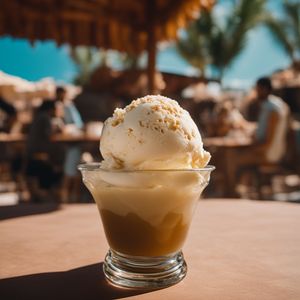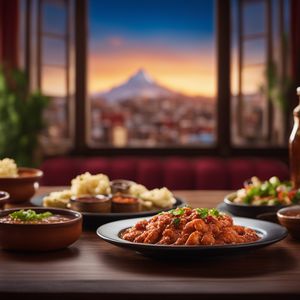
Dish
Helado de paila
Paila Ice Cream
Helado de paila is made by combining fruit, sugar, and ice in a large copper pot called a paila. The mixture is then churned by hand using a wooden paddle until it reaches a smooth, creamy texture. The ice cream is typically served in small scoops and can be enjoyed on its own or with a variety of toppings. Helado de paila is a refreshing dessert that is perfect for hot summer days.
Origins and history
Helado de paila is a traditional dessert from Ecuador that has been enjoyed for centuries. It is believed to have originated in the city of Ibarra, which is known for its delicious ice cream. Today, helado de paila can be found in ice cream shops and restaurants throughout Ecuador and is a popular dessert during the hot summer months.
Dietary considerations
Helado de paila is typically made with fruit and sugar and is suitable for most dietary restrictions. However, it may contain nuts or other allergens depending on the recipe.
Variations
There are many variations of helado de paila, including different fruit flavors and toppings. Some recipes call for the addition of cream or milk to create a richer, creamier texture.
Presentation and garnishing
Helado de paila is typically served in small scoops and can be garnished with nuts, fruit, or a drizzle of chocolate sauce. It is often presented in a traditional copper cup or bowl.
Tips & Tricks
To achieve the perfect texture for helado de paila, it is important to use high-quality ingredients and to churn the mixture by hand using a wooden paddle. The ice cream should be served immediately after it is made to ensure a smooth, creamy texture.
Side-dishes
Helado de paila can be enjoyed on its own or with a variety of toppings, including nuts, fruit, or chocolate sauce. It can also be served alongside other traditional Ecuadorian desserts, such as tres leches cake or empanadas.
Drink pairings
Helado de paila pairs well with a variety of drinks, including fruit juice, soda, or a glass of cold water.
Delicious Helado de paila recipes
More dishes from this category... Browse all »

Affogato
Italian cuisine

Bacio gelato
Italian cuisine

Banana Split
American cuisine

Bastani sonnati
Iranian cuisine

Biscuit Tortoni
Unknown cuisine

Blue Moon
American cuisine

Booza
Levantine cuisine

Brownie Sundae
American cuisine
More cuisines from this region... Browse all »

Argentinian cuisine
Savory, Smoky, Spicy, Tangy

Bolivian cuisine
Savory, Spicy, Tangy

Brazilian cuisine
Bold, Spicy, Savory, Sweet, Tangy

Chilean cuisine
Savory, Spicy, Smoky, Tangy

Colombian cuisine
Savory, Spicy, Sweet, Tangy

French Guianan cuisine
Fresh, Bold, Spicy, Savory, Sweet

Paraguayan cuisine
Bold, Savory, Spicy, Sweet

Peruvian cuisine
Spicy, Savory, Tangy, Citrusy, Umami

